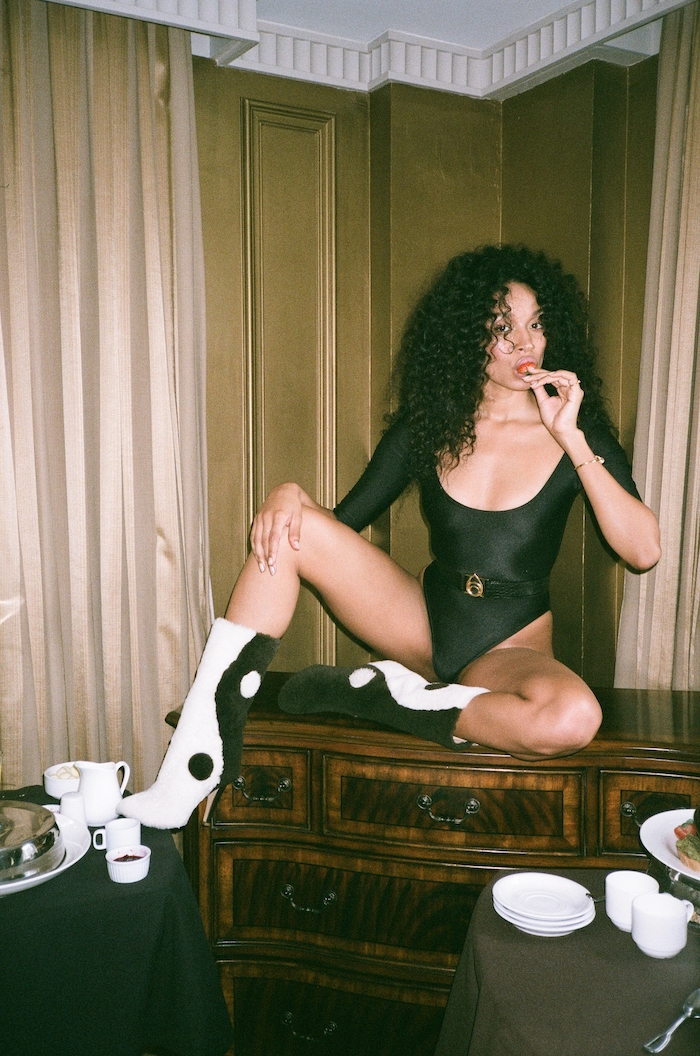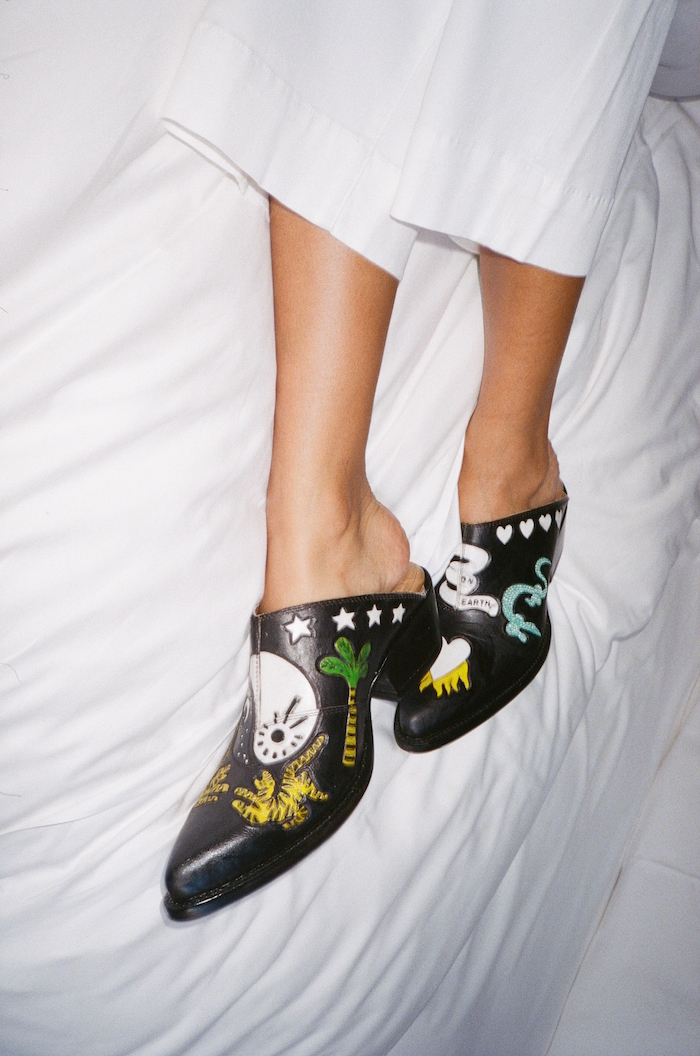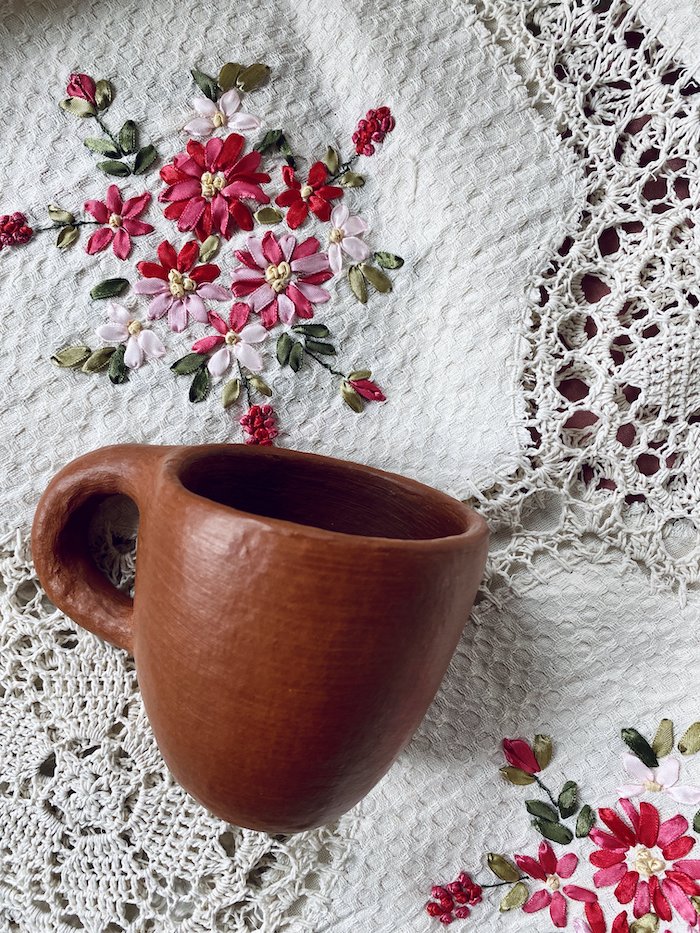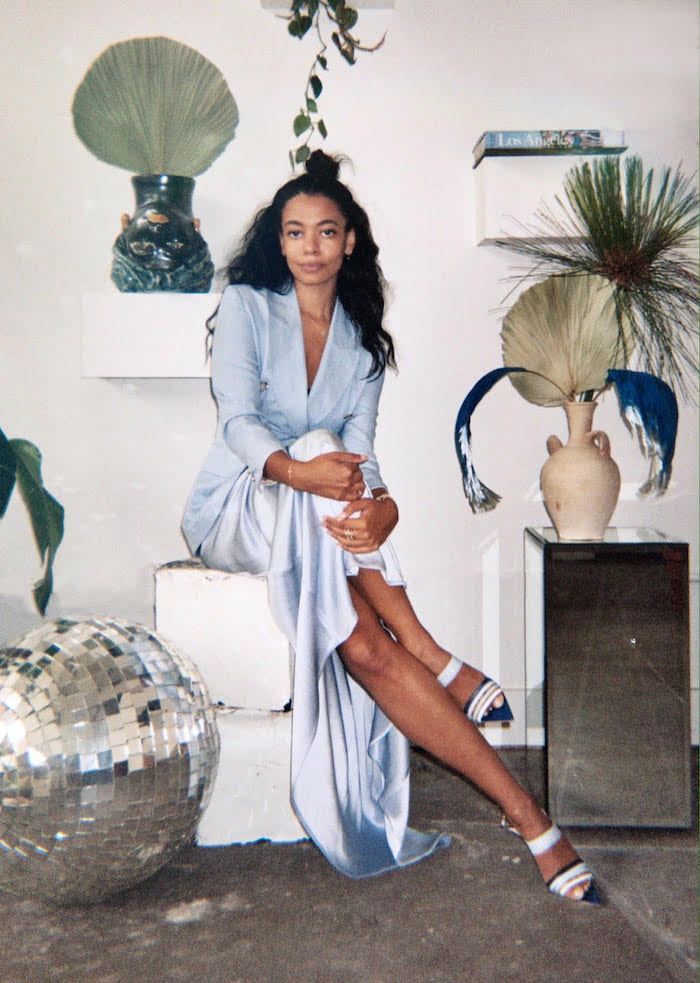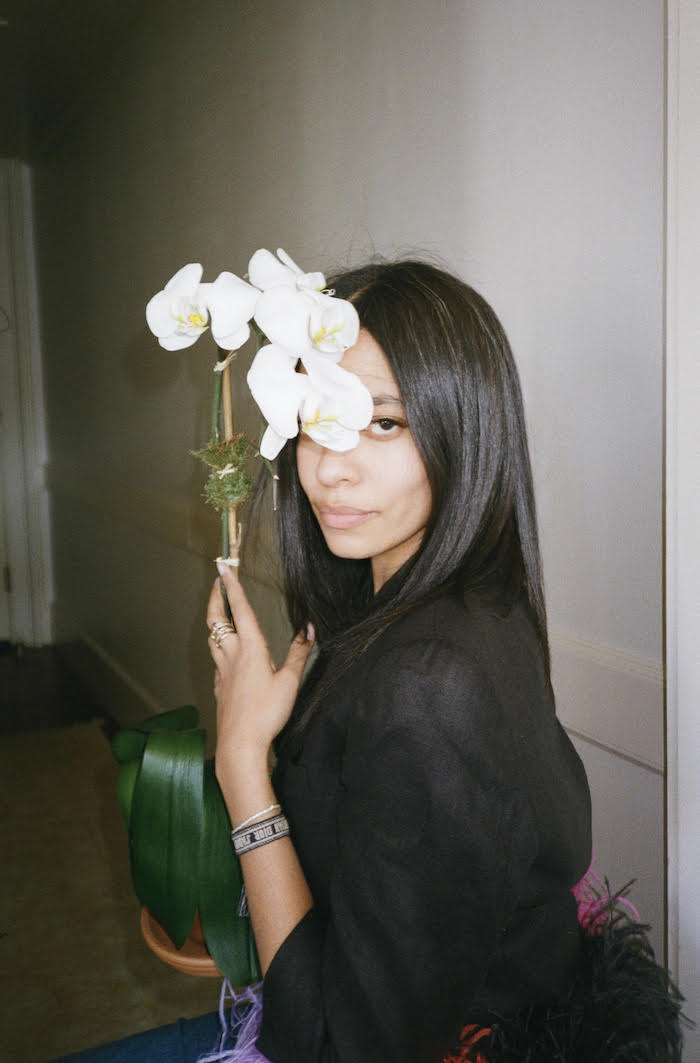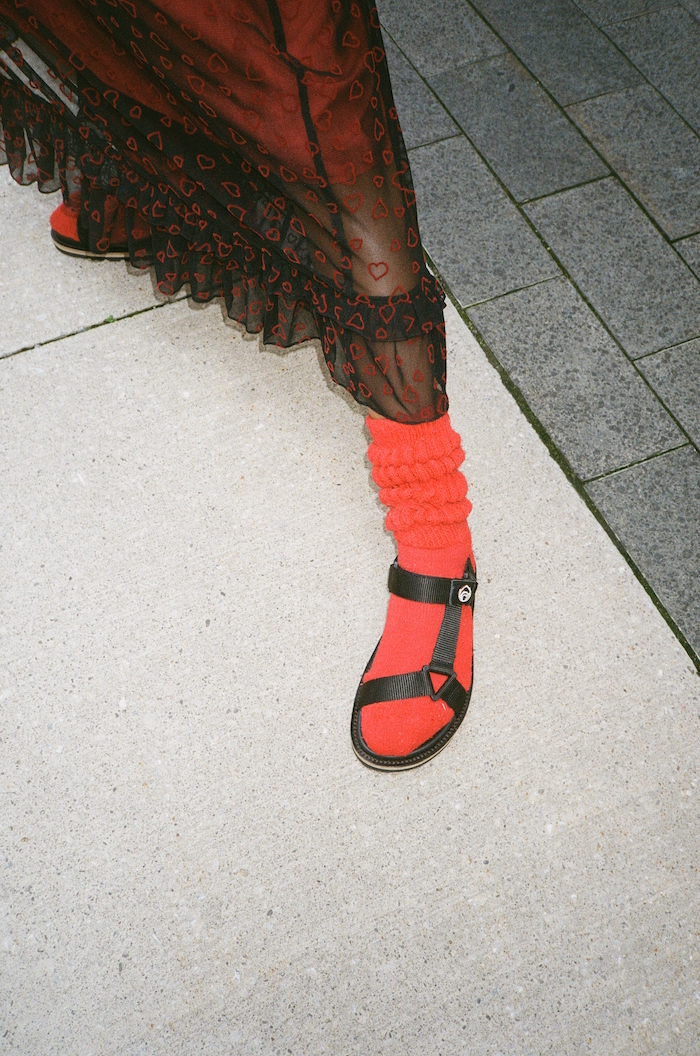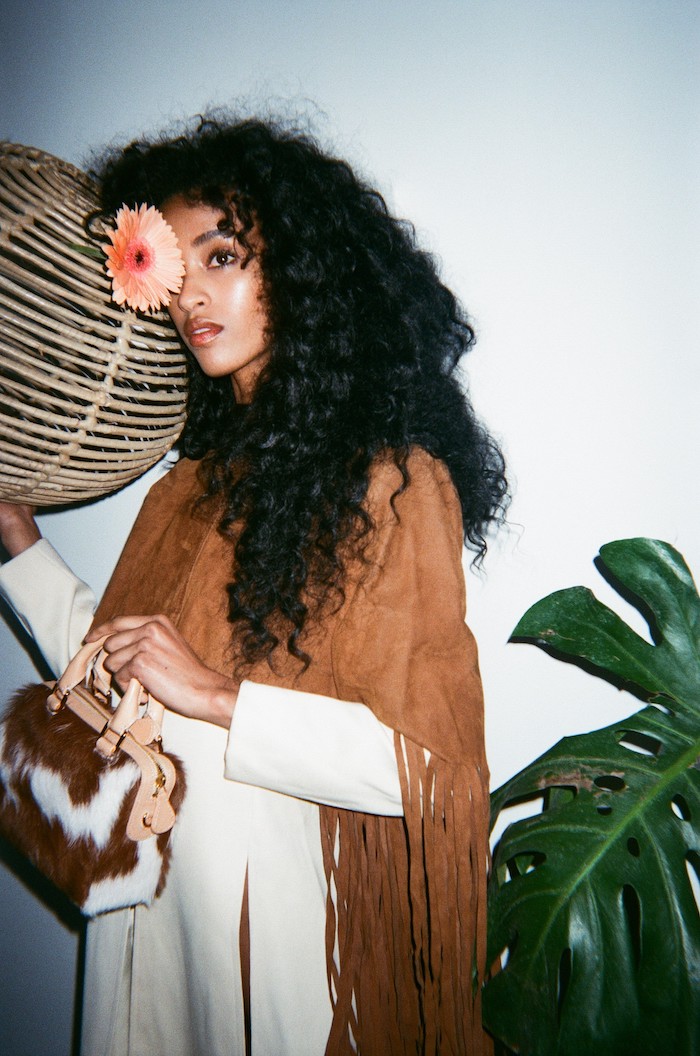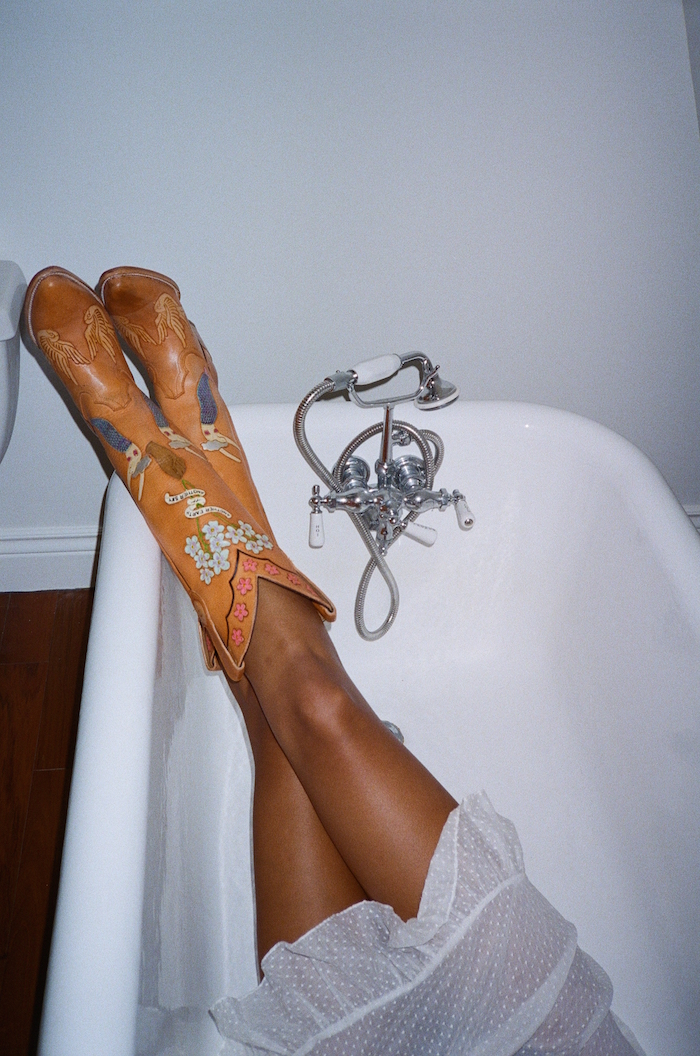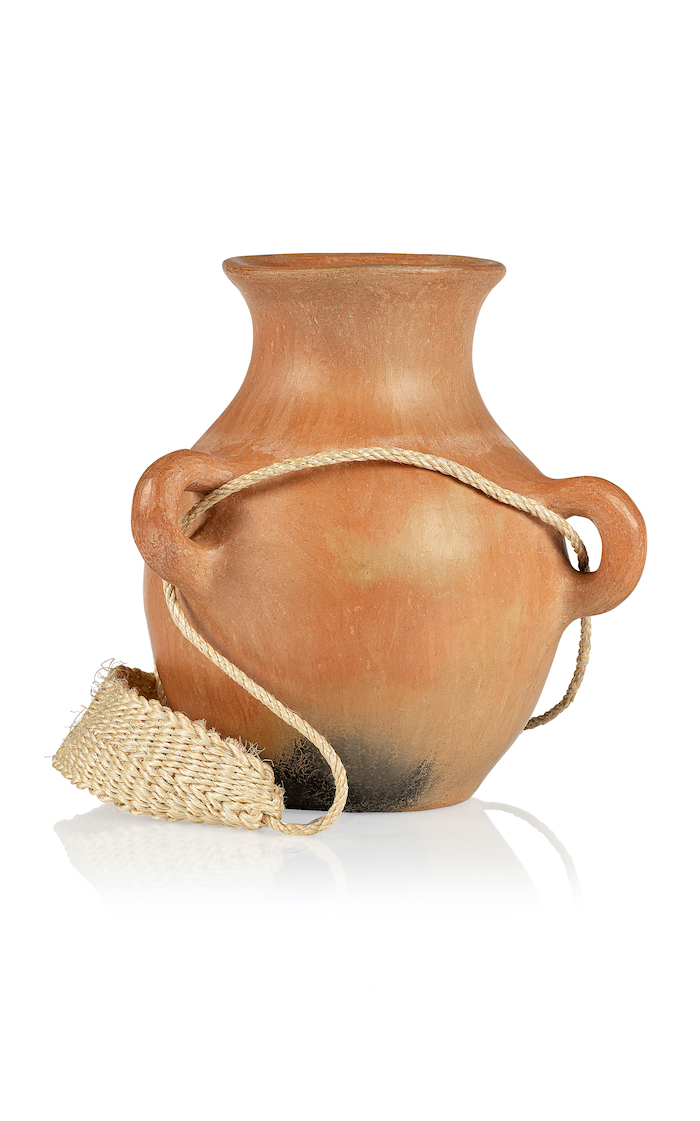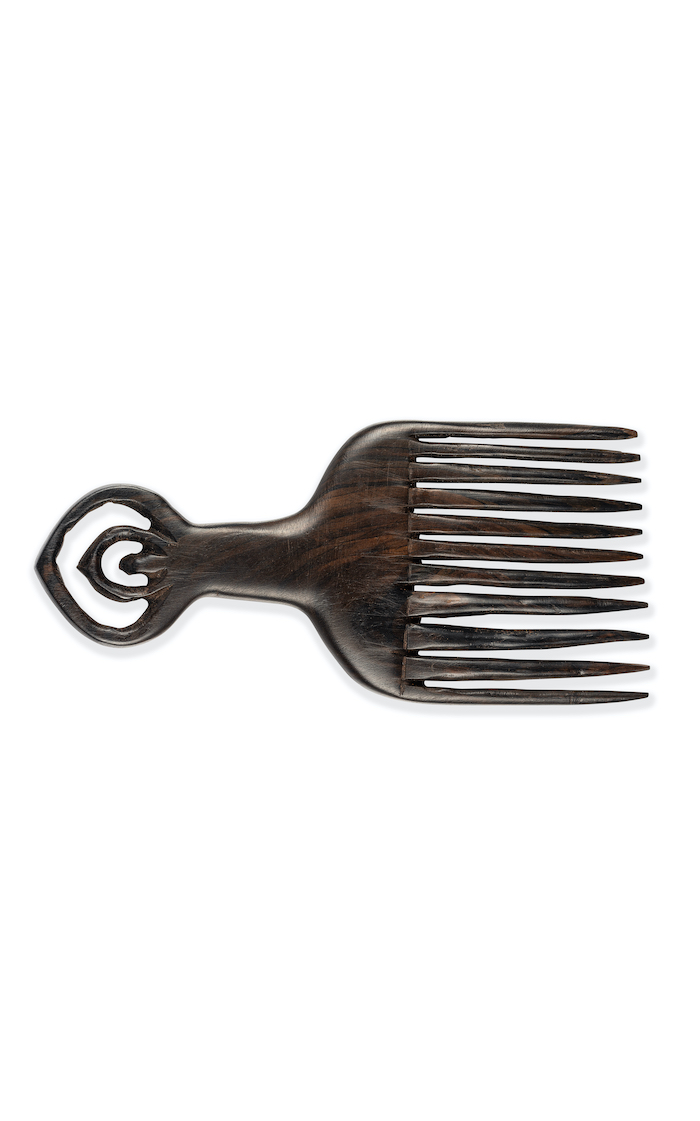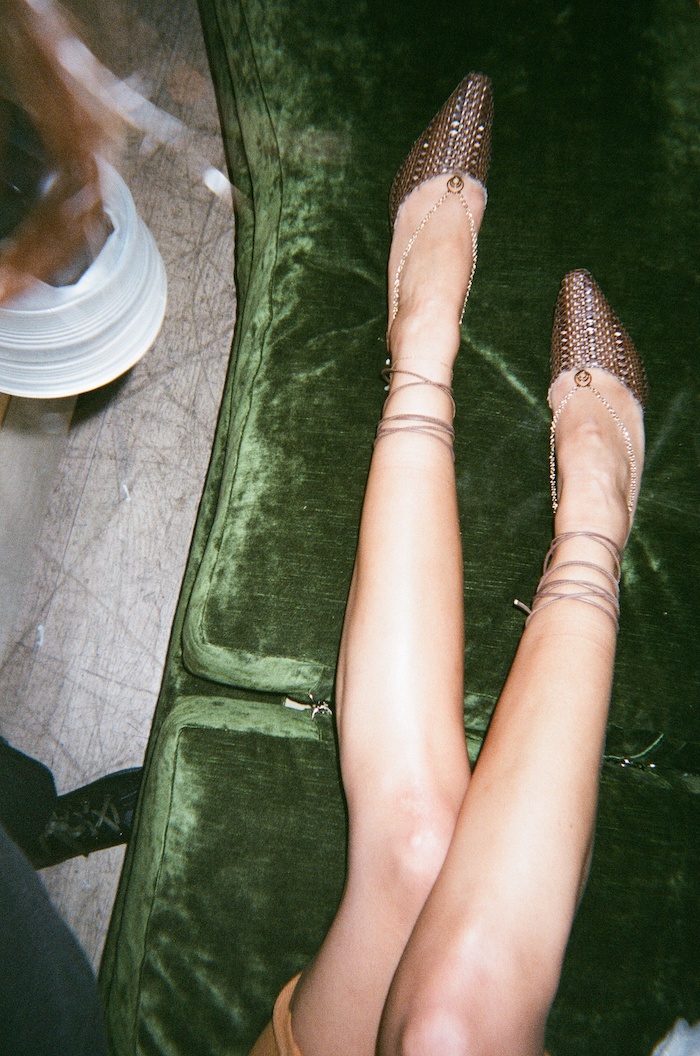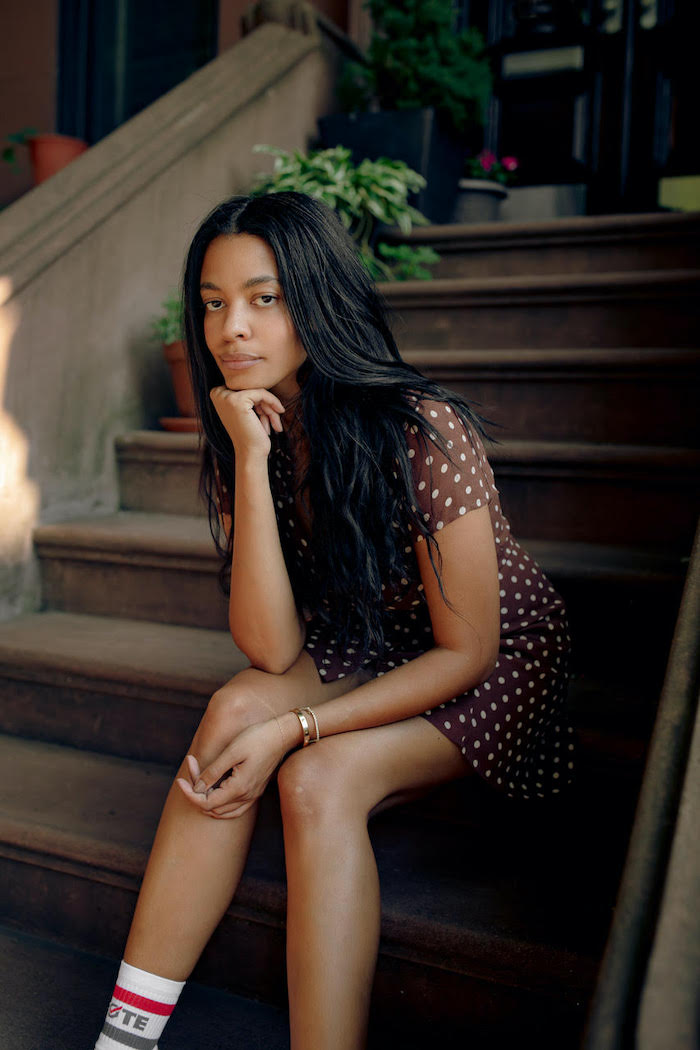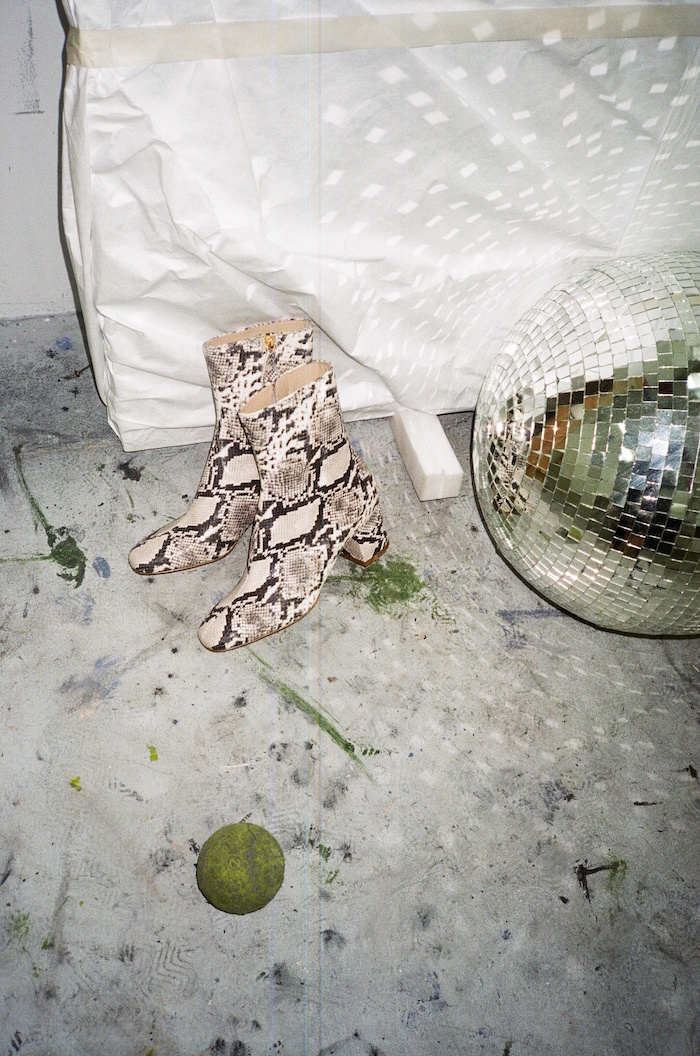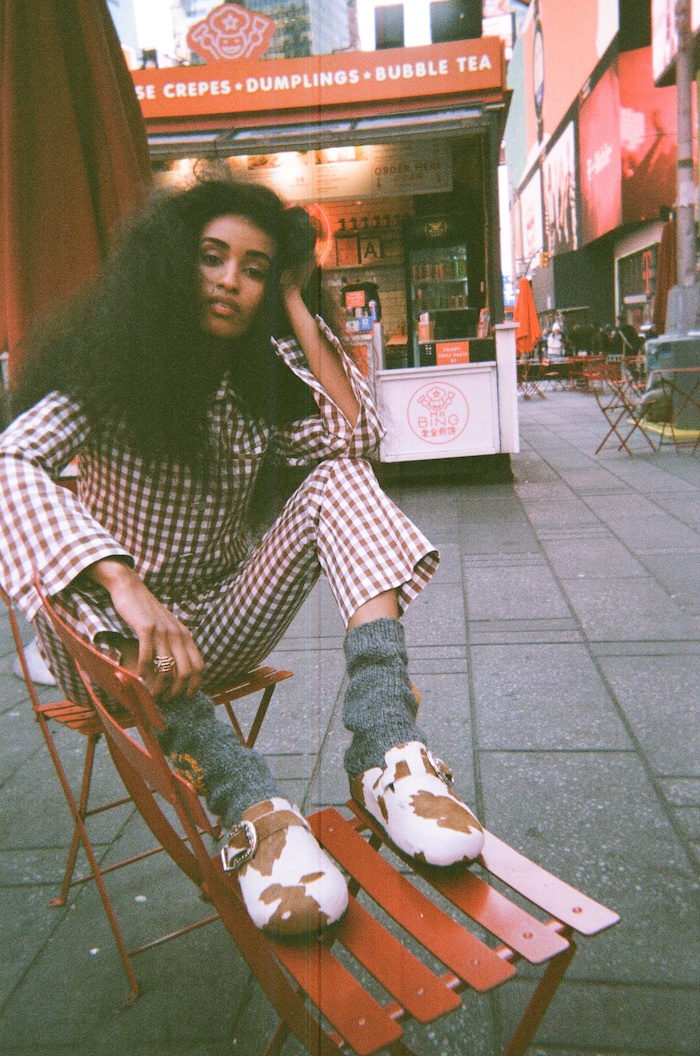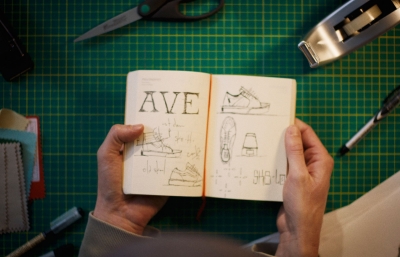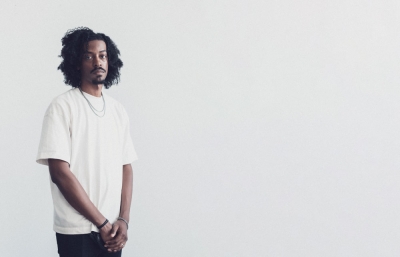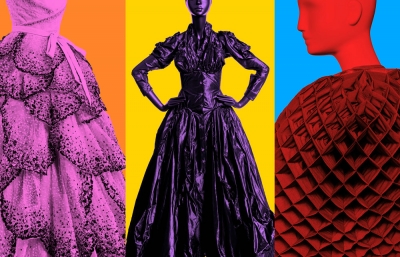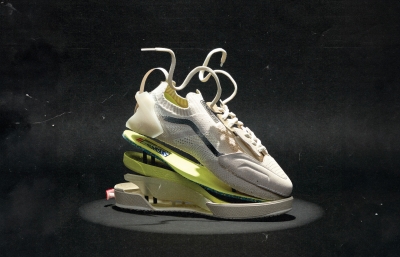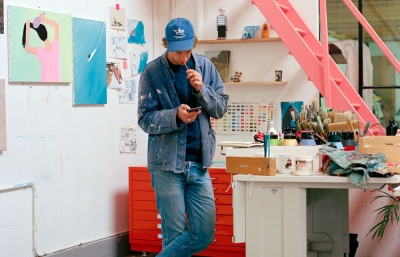Maybe she was born for the role, but the founder of Brother Vellies and the 15 Percent Pledge is named Aurora, the mythical goddess who traveled from east to west announcing the dawn. As a young designer captivated by fashion’s ability to “help us escape to a magical place,” Aurora James sought to represent an inclusive worldview of beauty. Traveling in Africa, committed to promoting artisan work, after meeting the crafters who make “vellies,” the local leather walking boots, she created a pipeline to market their goods. As Brother Velllies became a model of ethical production and sustainability, Aurora saw an opportunity to encourage fairness and the future by asking retail companies to pledge that 15% of their products be produced by Black businesses. New beginnings can make very fashionable, equitable endings.
Gwynned Vitello: Now that you have established the 15 Percent Pledge, what is the status and what has been the biggest, and maybe unforeseen, challenge?
Aurora James: What an incredible journey this past five months has been. I think we have all learned so much about our World, our country, each other and our collective pain. All of this learning is important so we can then focus on our progress, how we can march confidently forward, together, in the direction of change.
I am incredibly proud of the companies that have committed early to the 15 Percent Pledge. This benchmark was a very foreign idea when I introduced it, but it resonated with people, and I have no doubt that it will eventually be the norm in the country. Retailers like Sephora, Macy’s and MedMen are at the precipice of change, not just in their stores but in their industries. I am incredibly proud of Vogue and Yelp, who were our first publishing and tech companies to figure out how they could pledge, and the progress has been wonderful to watch. I must say, for every commitment we announce, there are a handful that never make it there. It takes bravery to publicly commit to such a big step. When I launched the 15 Percent Pledge, I estimated most retailers to be around 7-9% shelf space, but only after investigating did we realize that most sat between 1-2%. We never ask anyone to do it overnight, it’s a multi-year process with a multi-year plan. The painful reality is that not every retailer is willing to commit to Black businesses in such a meaningful way. Back people in this country are worthy of long-term commitments and a true seat at the table.
Not only have you founded a business that, since its genesis, has grown organically in terms of its mission, but you’ve challenged a business model. Do you feel torn between being the CEO/CFO and being the creative director?
I wouldn’t say I feel torn but the dichotomy is alive and well inside of me. It’s hard in a day to flip from some of the emotionally intense conversations we have at the 15 Percent Pledge, to then design a beautiful pair of shoes at Brother Vellies, then run numbers on the business to then return home and work on writing my book and also be a great friend, lover and daughter. We are all balancing so much, so I would be lying if I said it was easy. But no, that’s not usually when I feel torn. I feel torn over minutia—white lilies or blush peonies, almond or oat milk. I am shockingly decided over the larger issues in life.
That said, in your current role, you do both, in that you give others the opportunity to make a living creatively. I mean, for you, fashion is not just throwing on sweats, but it’s also not wearing the latest trend. I read an interview with Amy Sherman Palladino, who created Mrs. Maisel, and who, incidentally, is a dancer. Of her art, she said, “When you’re a dancer, it’s not just in class or when you’re in performance; when you’re home, your body is your instrument.” Do you feel similarly about creativity and fashion?
What a lovely statement. I am in the midst of a very deep love affair with the people of this planet. I want to learn everything about them and I want to see them thrive and be free. Brother Vellies and the 15 Percent Pledge are an expression of that. How can we all just live our lives doing what we want to do, existing in the pursuit of happiness. When your best friend laughs—do you know that sound? I want to hear that and feel that every day I am on this planet. My Mother was adopted at birth, and she told me that, as such, anyone I meet on the street could be my very close relative. You, Gwynn, could be my cousin. I feel that deeply, the connectivity. I am an only child and my Mother is the only blood relative I know. But somehow I feel like I come from the world’s largest family.
Being raised in Toronto must have played a part in your worldview, as it is considered one of the world’s most cosmopolitan cities, and Canada has a reputation for being so darned… nice, producing so many comedians and always ranking high in quality of life surveys.
Yes, it absolutely influenced my outlook. They say America is a cultural melting pot, but Canada is a cultural mosaic. The idea is that we retain more of our heritage and traditions. Growing up, I remember celebrating many different holidays and religious occasions. It was par for the course. We were curious about each other and respectful of each other’s cultures. I miss that. But I’m excited to instill that in my future children.
I read that you were named after Aurora (my mother and sister-in-law’s name, by the way) from Sleeping Beauty. My favorite outfits in the movie were not the “transformational” ball gowns, but the black peasant laced corset and brown skirt. Neutral but perfect for wandering around a haunted forest. Everyday clothing can be a fantasy right?
Absolutely, much of this life has felt like a fantasy. Some of the most shy pieces I have designed have taken me furthest off-road to the largest adventures. I’m thinking specifically of our Fall/Winter loafers.
The animal prints and woven textures of your shoes and accessories are wearable and adaptable, but not like some monochromatic, uniform line of clothing. Did you intend your pieces to be, say, neutrals with possibilities?
My intention really is to design things that people will fall in love with and own forever. And I mean it when I say forever. There is symbolism and thought behind so much of the collections. I often think of my shoes as an extension of me, part of my DNA, and the clothes work around them. So, yes, in a sense, they are all neutral in the way that a redhead is neutral. Or shocking blue eyes are too; it’s just part of you. 
What role does fashion play now, whether we are homebound or venturing out? Think of how Hollywood put on these extravaganzas so people daydream, or Jimi Hendrix wearing thrift store velvet jackets and scarves, or even little kids dressing up.
I think everyday fashion is shapeshifting. It feels to me that women are looking more to themselves versus outside sources on what to wear. I also truly believe that people are rethinking their spending and which companies and brands they’re comfortable investing in. We’re all getting a little more thoughtful about what we “need.”
Can you explain what went through your mind when you saw velskoen walking shoes and met the people who made them? What was the thought process that led you to consider helping them sell directly to a wider group of customers?
I just thought it was the true example of traditional design. It’s the ancestor of the modern day desert boot. I looked at the shoe they were making and thought it would do well with people in New York, and that maybe by working with these amazing people, we could keep traditional African design practices alive while creating and sustaining artisanal jobs. I started selling these in a booth at the Hester Street Market on the Lower East Side. I wasn’t sure if they would catch on, but I would sell out pretty quickly. A woman who had bought a few pairs over the course of some weeks came by and asked if I had a website—it turned out she was from the New York Times! I quickly made a website and launched my first collection in Spring 2013.
What was and is our impression of New York and the industry, any disappointments?
I spent time in New York as a teenager. I remember spending an entire day photographing the Alice in Wonderland statue in Central Park just a few months before the Twin Towers collapsed. When I initially moved to New York, I lived in a one bedroom apartment with two other people. But, no, I was never disappointed by New York. Yes, I have been disappointed by people at times. The fashion industry is full of an incredibly vibrant and talented cast of characters in this city. They make for the best, and also the worst of times. But let’s face it, “worst” is a very relative term. And fashion moves quickly, so there is no time to wallow. Chop chop. 
Then let’s move on to the goods. What fabrics do you particularly like? Are there any new materials you’d like to work with? And, now that you’ve grown bigger, how do you find artisans?
I still love working with various materials, but it’s important to me that we use those that are local as much as possible. At our core, you’ll find vegetable-tanned leathers. We’ve used soling from recycled tires in the past, we use hand-carved wood from Kenya, floral dyed feathers, along with a collection of other byproduct materials sourced from farmers across the globe. In the beginning, I was able to travel back and forth to Africa frequently, and I would just go to the local market and use whatever was available. We strive to lessen the impact of our production practices by always asking questions and making changes each season. We try not to over order and only order quantities we think we can sell.
Somehow, I think your appreciation of process might guide your desire to open brick and mortar stores. Is this still your intention, and why do you think it’s important?
A store space is inspiring to me because it can act as a living, breathing brand experience. We have one store in Brooklyn right now which is as manic as my mind. It’s really fascinating. Sometimes it’s totally calm and airy, and people walk in and want to curl up and sleep. Other times, it’s entirely chaotic, which is great. I don’t like retail experiences that are cookie cutter. If I’m working on a new collection, I want you to be able to walk into the space and feel that. Maybe I’m listening to a song on repeat. Maybe I’m burning sweetgrass. Because my studio is upstairs from the store, that connectedness is alive and well. I am going to be writing my book mostly in Los Angeles, so I’ve been considering opening a second store and office out there. We will see, won’t we?
Can you tell me about any budding new artists, any new designs you’re excited about?
I just went over to view the new Theaster Gates exhibit at the Gagosian, Black Vessel. It’s his first-ever solo exhibition in New York. It’s incredibly powerful. Of course, I’m always excited about what Jordan Casteel is doing, and last year’s Simone Leigh exhibit at the Guggenheim was really inspiring. Hugo McCloud’s portraits from plastic bags are also incredibly powerful. And a man very close to me is releasing another album soon, which I am incredibly excited about. I hate to say it, but sometimes the most beautiful things tend to emerge from the darkest hours. And I must admit, it has been a little dark when I’ve turned my flashlight off this past four years.
As someone who has carved her own path, do you have any advice for folks who may not have an MBA or MFA, but who want to make a difference?
Find out what is important to you and make sure to stay true to that. Put trust in yourself and just keep working at it. Sometimes your best mode of transportation is a simple leap of faith. And if all else fails, I will still love you.
This article was originally published in the Winter 2021 Quarterly

